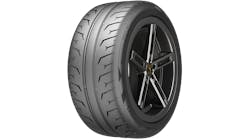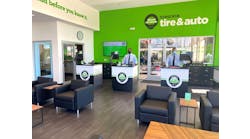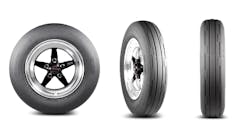Tire industry analyst and MTD columnist John Healy tracks Goodyear Tire & Rubber Co. and Cooper Tire & Rubber Co. very closely. In this MTD exclusive, Healy offers more thoughts about what Cooper’s brands bring to Goodyear, what will happen to Cooper after Goodyear completes its acquisition and more.
Cooper’s shareholders will meet on April 30 to vote on Goodyear’s acquisition proposal. The $2.5 billion transaction is currently being challenged by three Cooper shareholders.
MTD: When we talked after the Goodyear-Cooper deal was announced on Feb. 22, you said Goodyear will gain "a stronger brand in the middle of the market" by acquiring Cooper. Do you still feel that way?
Healy: Absolutely. Goodyear is a strong brand and has typically been viewed as a provider in the top-end/premium aspect of the industry. That said, the brand presence of offerings like Kelly and Dunlop have somewhat diminished in the last five to 10 years.
We see this acquisition of Cooper as a way to reestablish a presence in the middle of the market from a price standpoint, with brands and products that are viewed favorably.
This approach gives Goodyear the opportunity to recreate more price and brand integrity with the Goodyear offering, as it will now operate a stronger second brand in the middle of the market.
MTD: Where do you think Goodyear will position Cooper's other brands, particularly Mastercraft and Starfire?
Healy: Hard to know at this point, but my thought is that both the Mastercraft and Starfire brands will be viewed as assets rather than items that need to be changed or repositioned. Both brands are favorably viewed in the market by observers/raters of products and consumers.
Given this - as well as evolving car parc dynamics - it would seem unlikely that major changes would occur. Simply put, if it’s not broken, why fix it?
MTD: Any thoughts on how Goodyear might integrate Cooper's three, U.S.-based consumer tire plants into its existing manufacturing footprint in the U.S.? Would certain production adjustments/reallocations make sense and if so, why?
Healy: Too early to tell.
MTD: Both companies' stock price received a boost after the deal was announced. What feedback are you hearing from the financial community as it pertains to the Goodyear-Cooper deal?
Healy: Investors are excited. With any deal, the word “synergies” is presented and creates excitement for investors, in terms of value creation. The assets of Cooper fit nicely inside Goodyear and the opportunity set seems rich. Now, it will be all about developing the combined approach to realizing these benefits. The ultimate realization of the benefits of this transaction will come down to execution.
When asked about Cooper’s post-acquisition future, Healy replied that “corporate takeovers and business unit classifications are always unique as tax treatment strategies and business unit strategies are always complicated and unique. But in most cases, what happens is that the acquiring entity will begin to operate the acquired asset as part of their own operations.
“In this case, Goodyear will be taking over the asset of Cooper and over a period of time, will make Cooper a part of their own operations,” he explains.
“My best guess is that for a shorter period of time - maybe six to 12 months - Cooper will likely operate without major changes until Goodyear can finalize plans on how it sees the Cooper operations fitting into its goals for the combined entity over the long-run.” (Goodyear expects to finalize the acquisition during the second half of 2021.)
“Typically, a conservative approach is taken here, as once changes are made, they are often difficult to revert.
“From my perspective, Goodyear is acquiring Cooper for a number of reasons and those reasons relate to product positioning, brands and relationships. It would be unwise to make major changes to those items in the short-medium term.”



